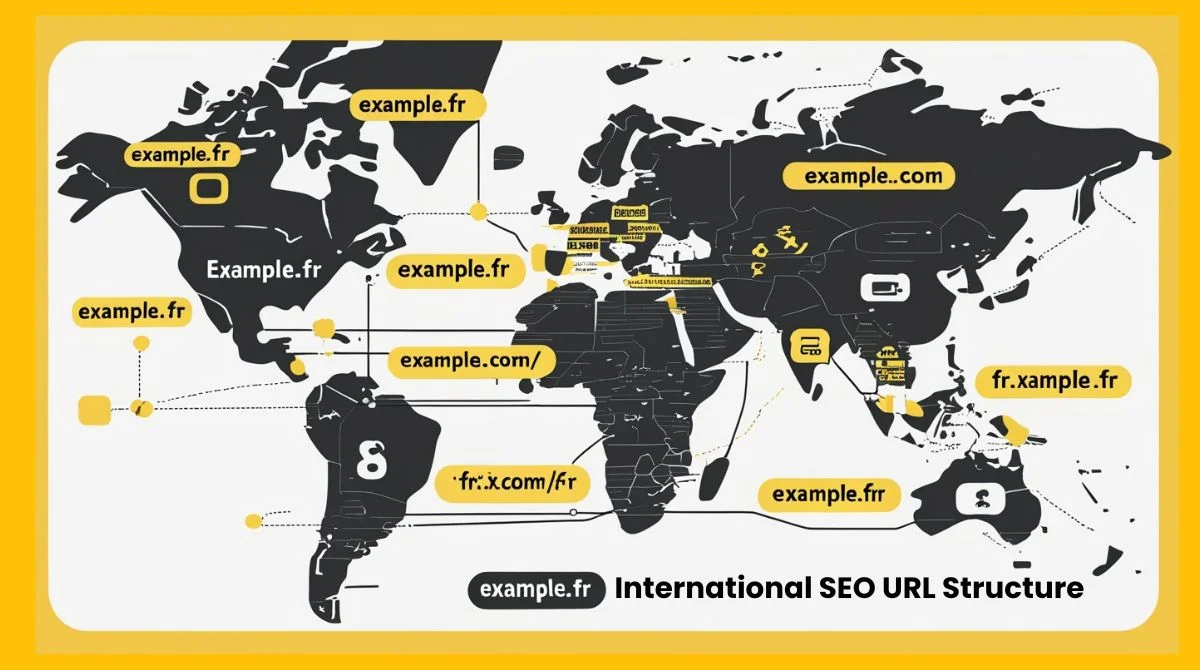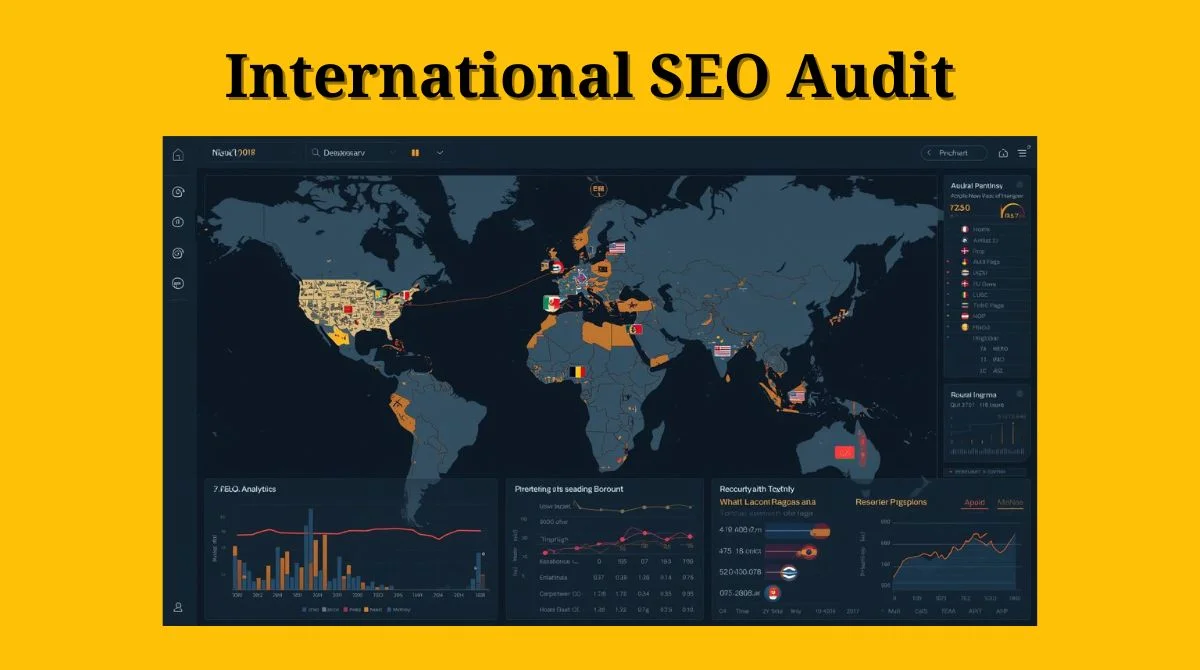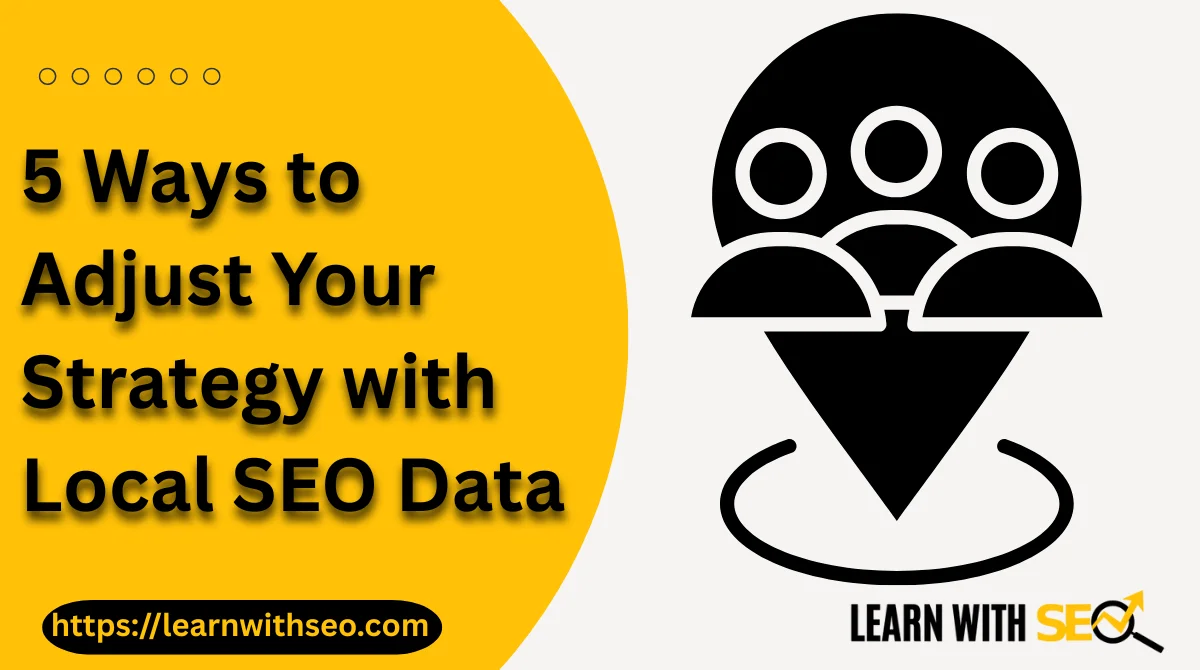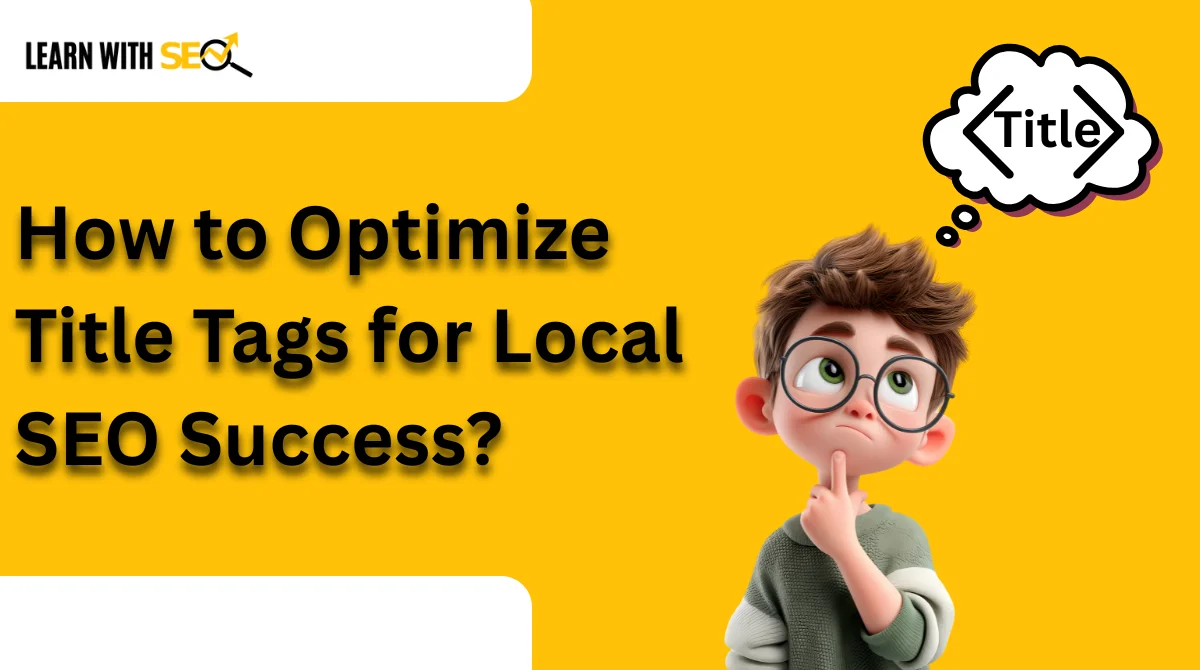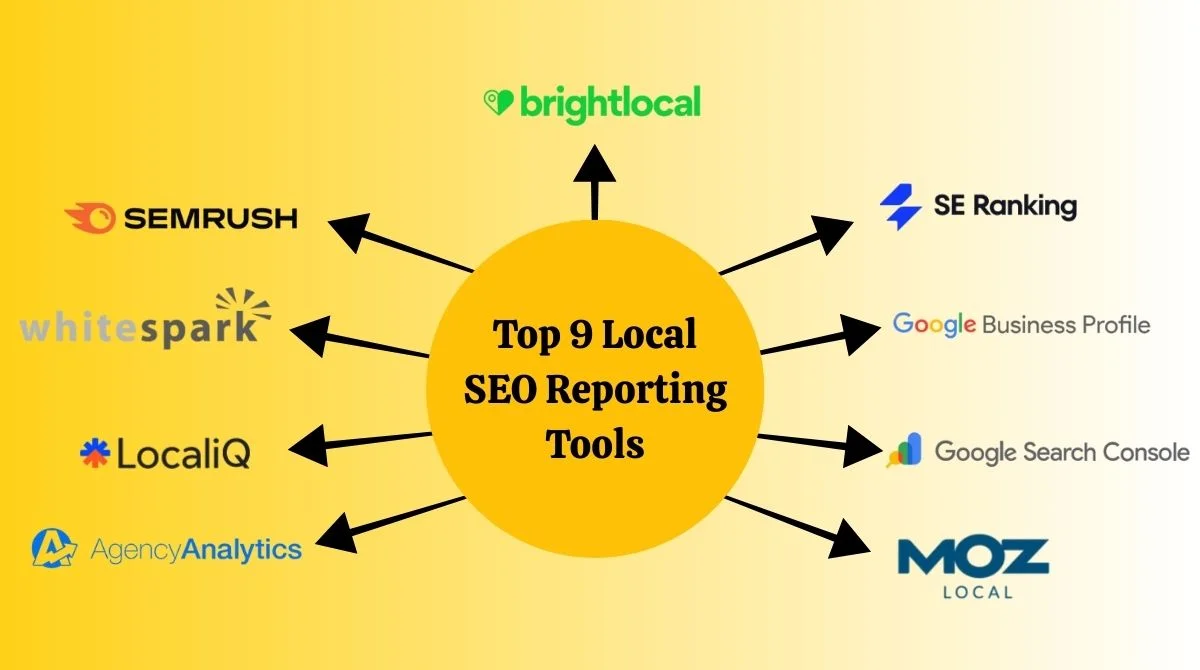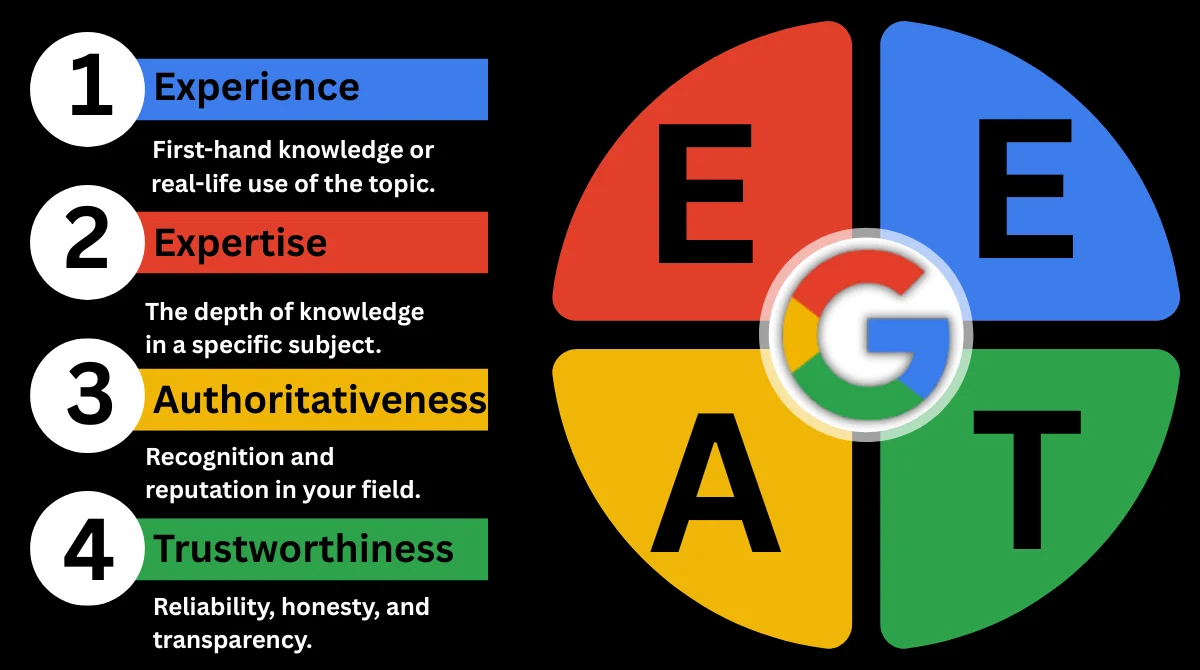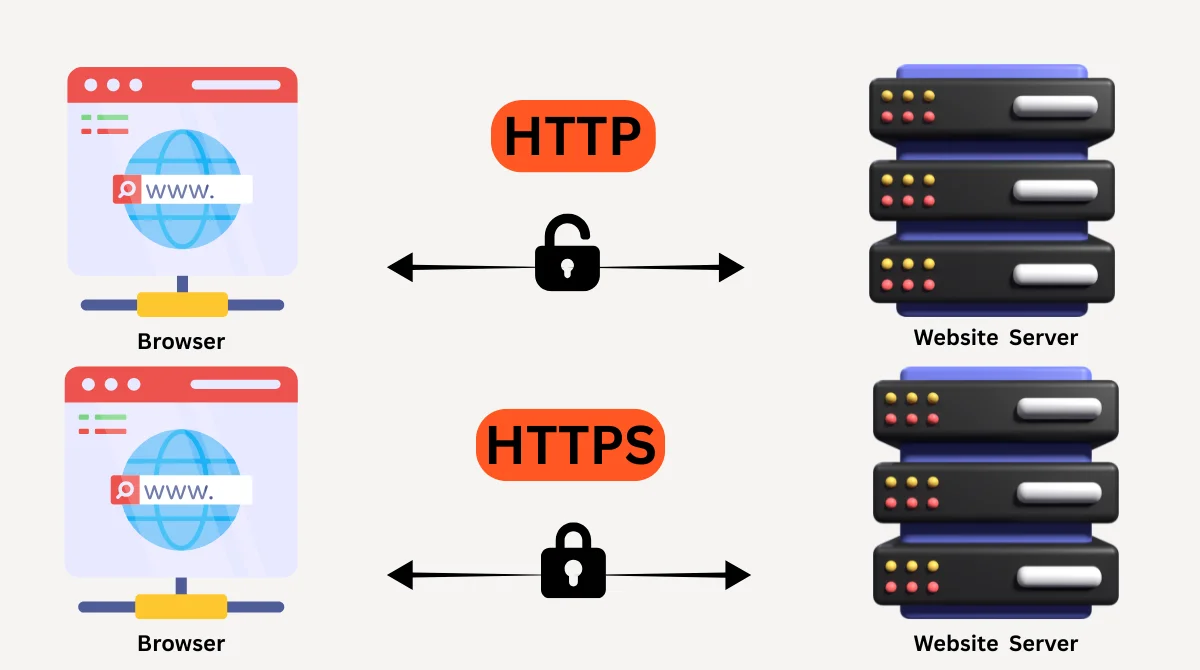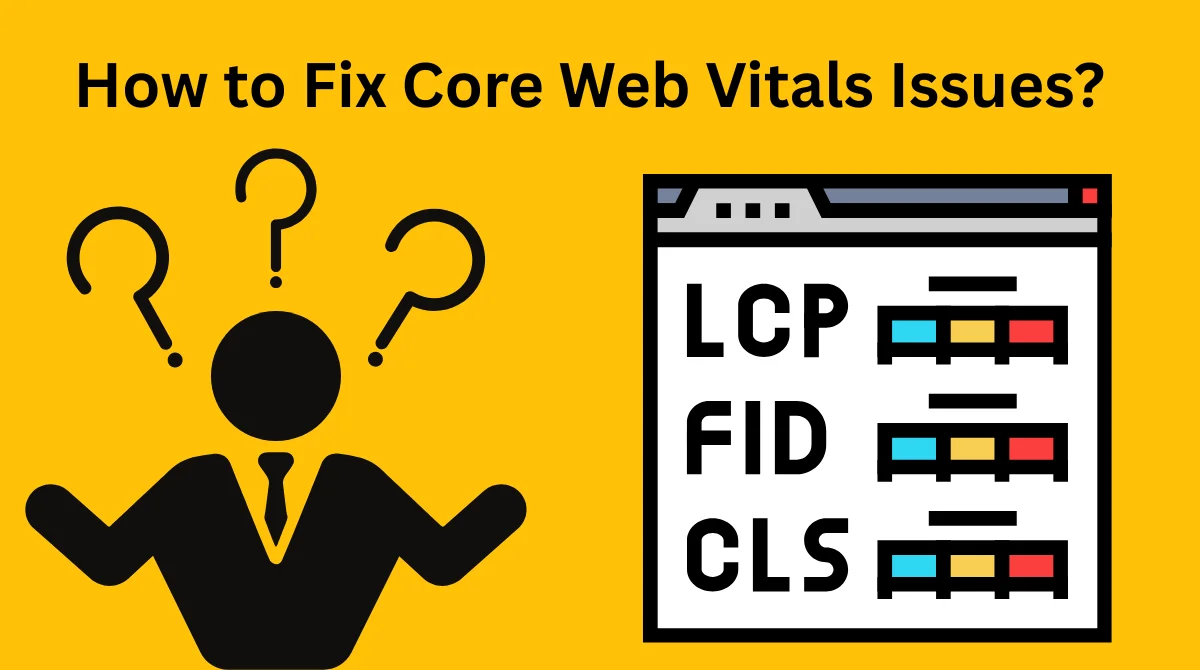Running a Shopify store means competing with thousands of other online shops. Getting your products in front of the right customers starts with proper search engine optimization.
Many store owners struggle to get organic traffic because they skip basic SEO steps. This guide walks you through seven key elements every Shopify store owner needs to focus on.
1. Keyword Research and Optimization
Finding the right keywords is the foundation of your SEO strategy. You need to know what words customers type when looking for products like yours.
Key actions to take:
- Use Google Keyword Planner to find search volumes for your product terms.
- Target long-tail keywords like “comfortable running shoes for flat feet” instead of generic terms.
- Research competitor keywords to identify ranking opportunities.
- Place keywords naturally in product titles, descriptions, and URLs.
- Focus on buyer-intent keywords that attract ready-to-purchase customers.
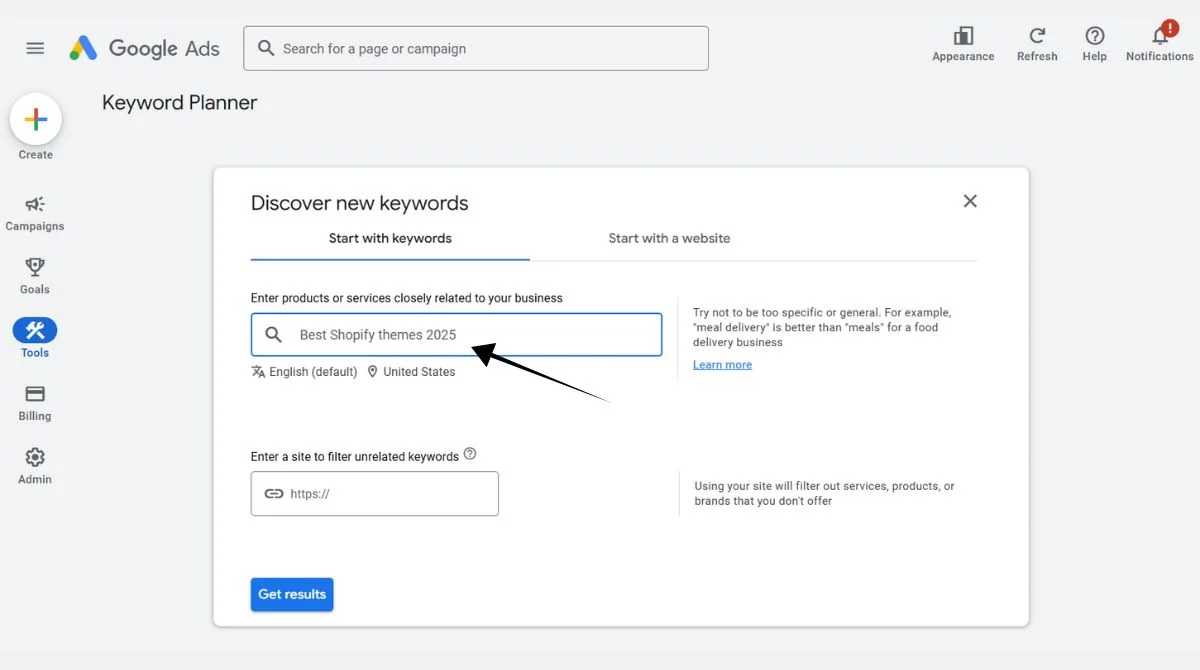

2. Product Page Optimization
Your product pages are where sales happen. They also need to rank well in search results to bring in traffic.
Optimization steps:
- Write unique descriptions of at least 300 words for each product.
- Create clear titles that include brand names and key features.
- Add high-quality images with descriptive alt text.
- Name image files with relevant keywords before uploading.
- Keep URLs short and include the main keyword.
- Avoid copying manufacturer descriptions.
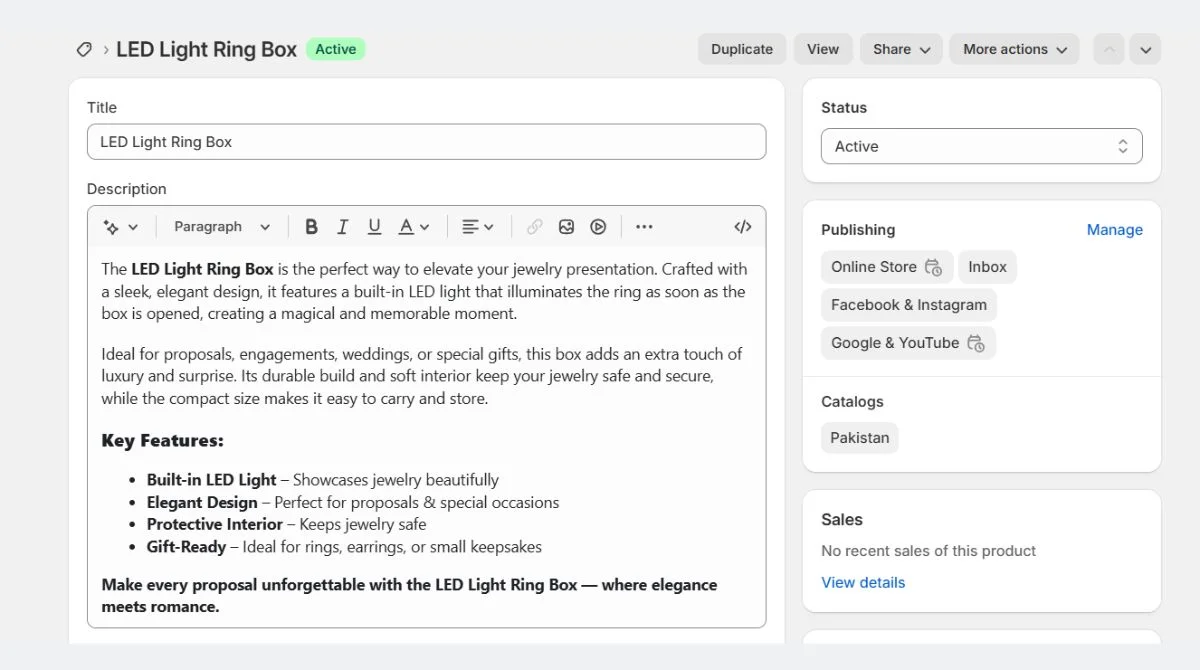
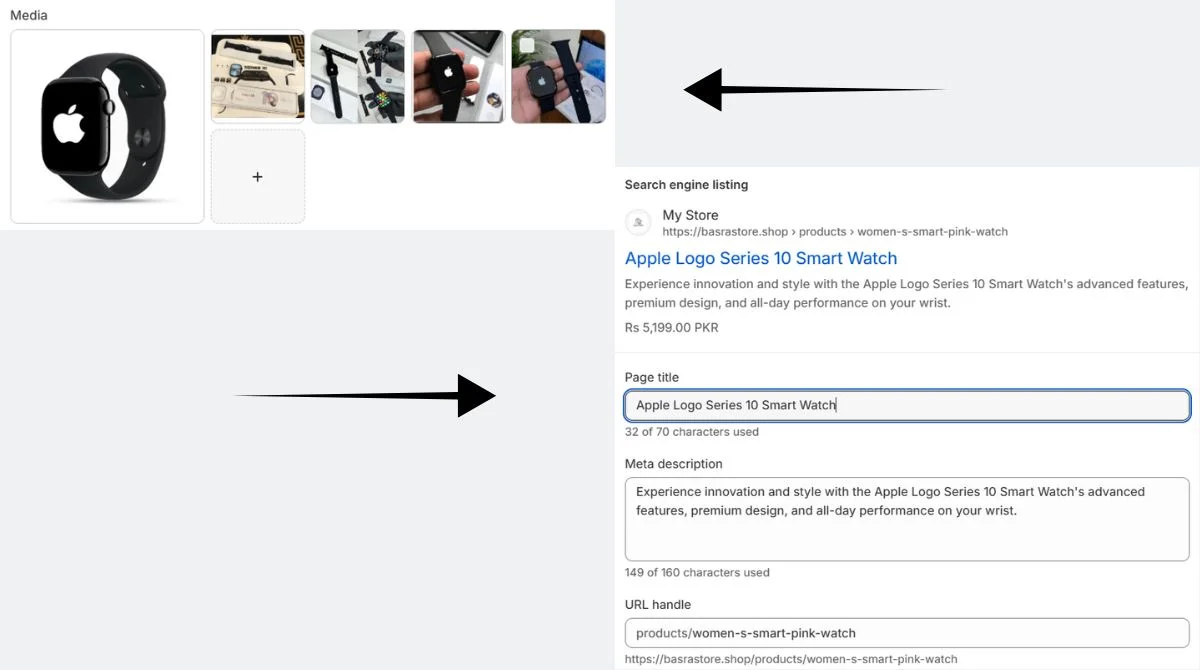
3. Site Structure and Navigation
How you organize your store affects both user experience and SEO rankings. Google prefers sites that are easy to crawl and understand.
Structure best practices:
- Group products into logical collections based on categories.
- Ensure every product is reachable within three clicks from the homepage.
- Use breadcrumb navigation to show the site hierarchy.
- Create a clean header menu with visible main categories.
- Link related products within descriptions.
- Keep navigation simple and intuitive for visitors.

4. Technical SEO Elements
Technical aspects of your Shopify store determine how well search engines can access and index your pages.
Technical requirements:
- Compress images to improve loading speed.
- Remove unused apps and code that slow down your site.
- Test your store on multiple mobile devices.
- Submit your sitemap at yourstore.com/sitemap.xml to Google Search Console.
- Fix broken links and use 301 redirects for changed URLs.
- Ensure the SSL certificate is enabled for HTTPS security.
- Monitor crawl errors regularly in Search Console.
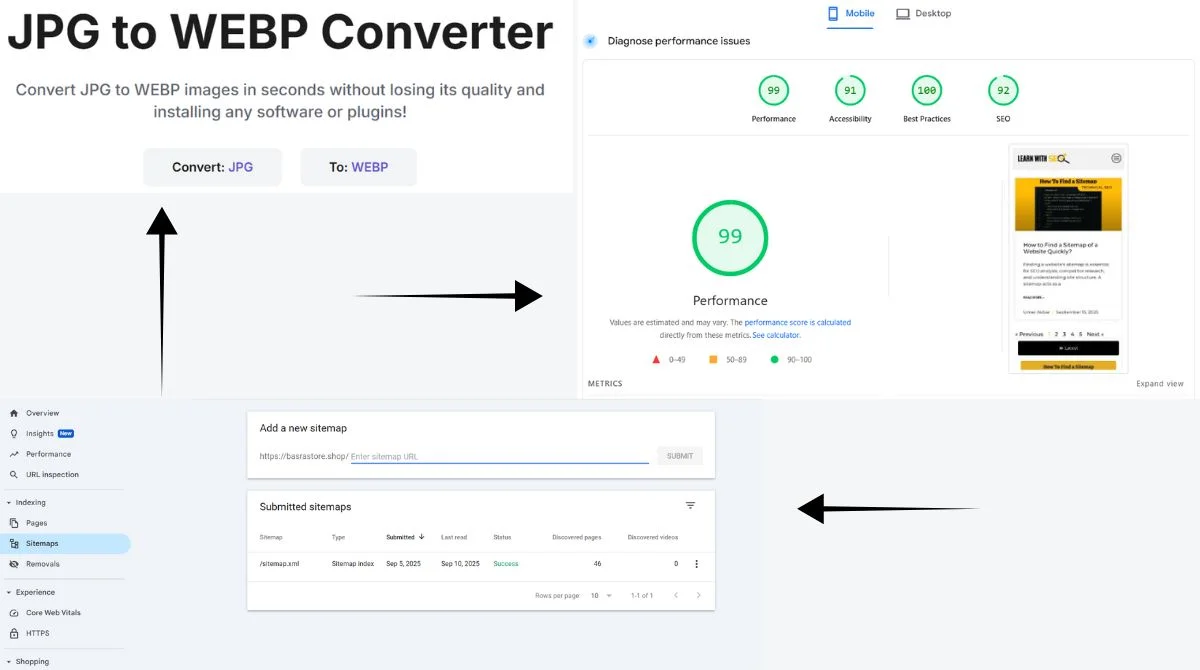

5. Content Marketing Strategy
Creating valuable content beyond product pages helps you rank for more keywords and establish authority.
Content tactics:
- Start a blog section to answer customer questions.
- Write buying guides, how-to articles, and comparison posts.
- Target informational keywords that product pages cannot rank for.
- Update content regularly to keep it fresh and relevant.
- Use internal links to connect blog posts to relevant products.
- Focus on solving customer problems related to your products.
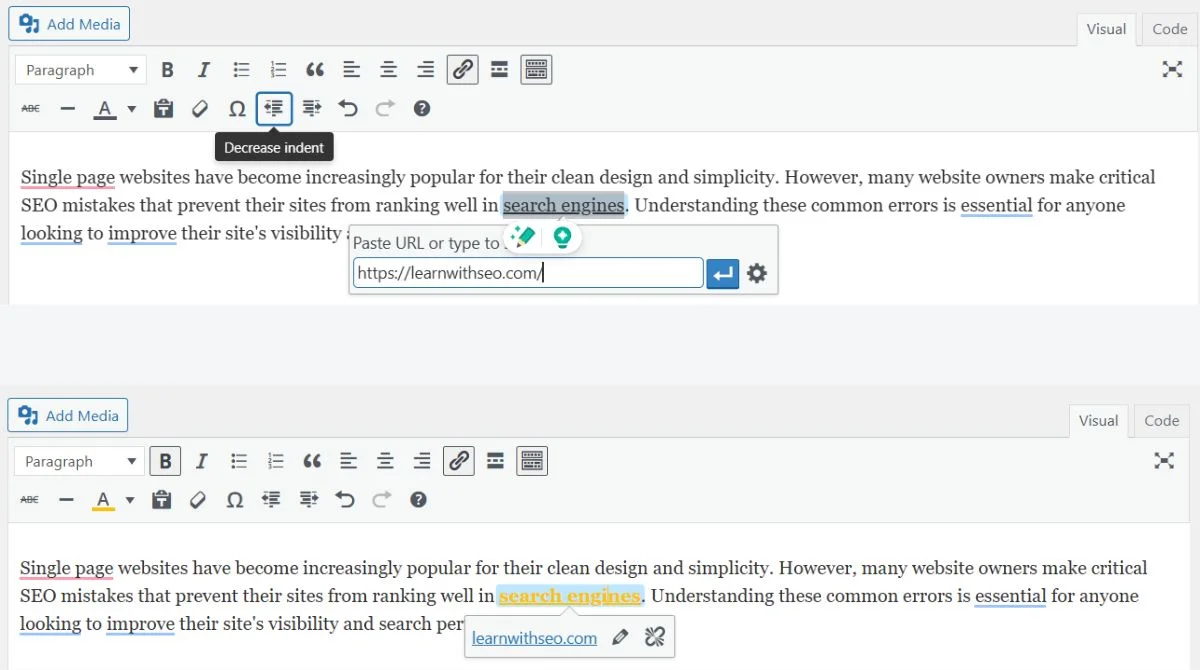
6. Meta Tags and Descriptions
These elements tell search engines and users what each page contains. They appear in search results and influence click-through rates.
Meta optimization steps:
- Write meta titles between 50-60 characters with keywords near the beginning.
- Create meta descriptions between 150-160 characters with a call to action.
- Customize URL handles to be clean and keyword-rich.
- Fill in image alt text for every photo, describing what it shows.
- Make each page’s meta tags unique and descriptive.
- Include persuasive language that encourages clicks.

7. Link Building and Authority
Building quality backlinks shows Google that other sites trust your content. This remains one of the strongest ranking factors.
Link building methods:
- Reach out to bloggers for guest posting opportunities.
- Get listed in quality business directories and Google Business Profile.
- Create shareable content like infographics and research studies.
- Monitor backlink profile using Google Search Console.
- Disavow spammy links that could hurt rankings.
- Partner with complementary brands for cross-promotion.

Complete Shopify SEO Checklist
Use this table to track your progress and ensure you have covered all essential elements:
| SEO Element | Task | Status |
| Keyword Research | Conduct keyword research using Google Keyword Planner | ☐ |
| Identify long-tail keywords for products | ☐ | |
| Research competitor keywords | ☐ | |
| Create a keyword map for products and pages | ☐ | |
| Product Pages | Write unique 300+ word descriptions | ☐ |
| Optimize product titles with keywords | ☐ | |
| Add alt text to all product images | ☐ | |
| Optimize image file names | ☐ | |
| Create clean, keyword-rich URLs | ☐ | |
| Site Structure | Organize products into logical collections | ☐ |
| Implement breadcrumb navigation | ☐ | |
| Create a clear header menu | ☐ | |
| Add internal links between related products | ☐ | |
| Ensure a 3-click rule for all pages | ☐ | |
| Technical SEO | Compress and optimize all images | ☐ |
| Test mobile responsiveness | ☐ | |
| Submit sitemap to Google Search Console | ☐ | |
| Fix broken links and set up 301 redirects | ☐ | |
| Verify HTTPS/SSL is enabled | ☐ | |
| Check and fix crawl errors | ☐ | |
| Content Marketing | Set up blog section | ☐ |
| Create buying guides and how-to articles | ☐ | |
| Target informational keywords | ☐ | |
| Schedule regular content updates | ☐ | |
| Add internal links to products | ☐ | |
| Meta Tags | Write unique meta titles (50-60 characters) | ☐ |
| Create meta descriptions (150-160 characters) | ☐ | |
| Customize URL handles for all pages | ☐ | |
| Add alt text to all images | ☐ | |
| Include keywords naturally in tags | ☐ | |
| Link Building | Reach out for guest posting opportunities | ☐ |
| Submit to quality directories | ☐ | |
| Create shareable content | ☐ | |
| Set up Google Business Profile | ☐ | |
| Monitor backlinks monthly | ☐ | |
| Identify partnership opportunities | ☐ |
Start Improving Your Shopify SEO Today
Implementing this shopify seo checklist takes time but delivers long-term results. Start with the basics like keyword research and product optimization.
Focus on one element at a time rather than trying to do everything at once. Track your progress using the checklist table above and mark off completed tasks.
Remember that SEO is an ongoing process, not a one-time task. The effort you put into SEO now will continue paying off for months and years with sustained organic traffic.


